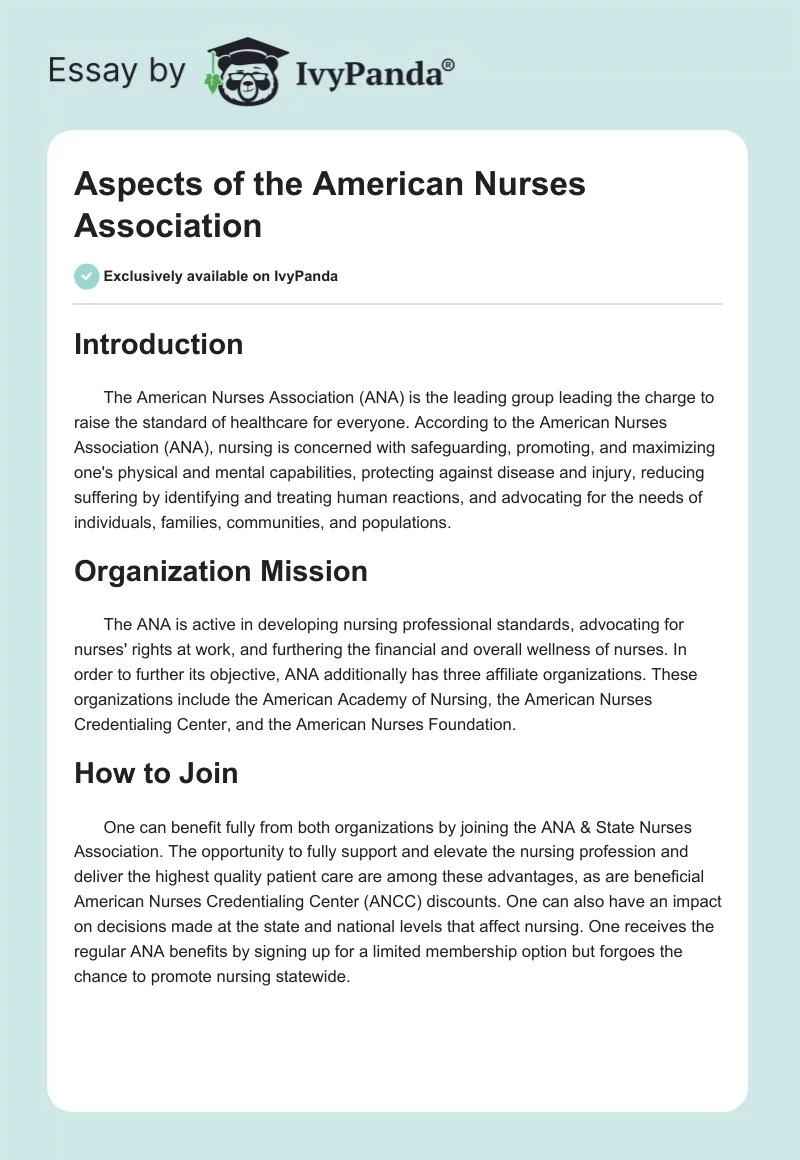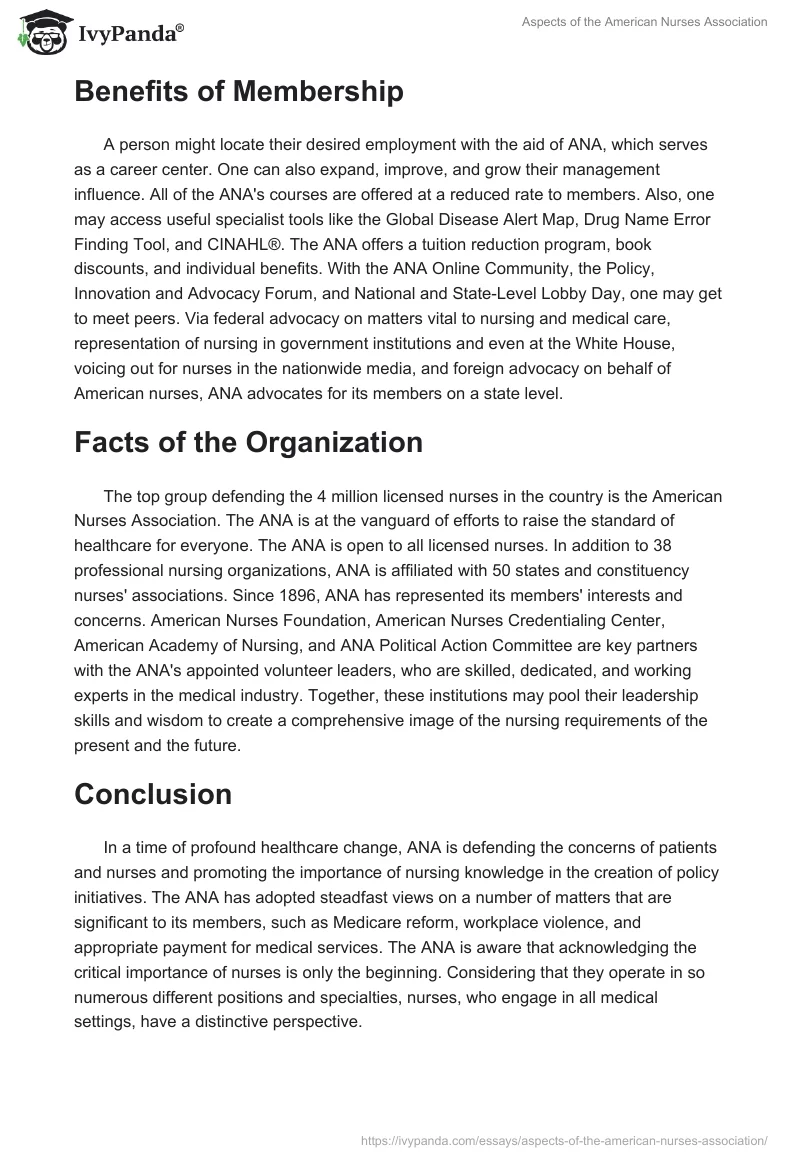Introduction
The American Nurses Association (ANA) is the leading group leading the charge to raise the standard of healthcare for everyone. According to the American Nurses Association (ANA), nursing is concerned with safeguarding, promoting, and maximizing one’s physical and mental capabilities, protecting against disease and injury, reducing suffering by identifying and treating human reactions, and advocating for the needs of individuals, families, communities, and populations.
Organization Mission
The ANA is active in developing nursing professional standards, advocating for nurses’ rights at work, and furthering the financial and overall wellness of nurses. In order to further its objective, ANA additionally has three affiliate organizations. These organizations include the American Academy of Nursing, the American Nurses Credentialing Center, and the American Nurses Foundation.
How to Join
One can benefit fully from both organizations by joining the ANA & State Nurses Association. The opportunity to fully support and elevate the nursing profession and deliver the highest quality patient care are among these advantages, as are beneficial American Nurses Credentialing Center (ANCC) discounts. One can also have an impact on decisions made at the state and national levels that affect nursing. One receives the regular ANA benefits by signing up for a limited membership option but forgoes the chance to promote nursing statewide.
Benefits of Membership
A person might locate their desired employment with the aid of ANA, which serves as a career center. One can also expand, improve, and grow their management influence. All of the ANA’s courses are offered at a reduced rate to members. Also, one may access useful specialist tools like the Global Disease Alert Map, Drug Name Error Finding Tool, and CINAHL®. The ANA offers a tuition reduction program, book discounts, and individual benefits. With the ANA Online Community, the Policy, Innovation and Advocacy Forum, and National and State-Level Lobby Day, one may get to meet peers. Via federal advocacy on matters vital to nursing and medical care, representation of nursing in government institutions and even at the White House, voicing out for nurses in the nationwide media, and foreign advocacy on behalf of American nurses, ANA advocates for its members on a state level.
Facts of the Organization
The top group defending the 4 million licensed nurses in the country is the American Nurses Association. The ANA is at the vanguard of efforts to raise the standard of healthcare for everyone. The ANA is open to all licensed nurses. In addition to 38 professional nursing organizations, ANA is affiliated with 50 states and constituency nurses’ associations. Since 1896, ANA has represented its members’ interests and concerns. American Nurses Foundation, American Nurses Credentialing Center, American Academy of Nursing, and ANA Political Action Committee are key partners with the ANA’s appointed volunteer leaders, who are skilled, dedicated, and working experts in the medical industry. Together, these institutions may pool their leadership skills and wisdom to create a comprehensive image of the nursing requirements of the present and the future.
Conclusion
In a time of profound healthcare change, ANA is defending the concerns of patients and nurses and promoting the importance of nursing knowledge in the creation of policy initiatives. The ANA has adopted steadfast views on a number of matters that are significant to its members, such as Medicare reform, workplace violence, and appropriate payment for medical services. The ANA is aware that acknowledging the critical importance of nurses is only the beginning. Considering that they operate in so numerous different positions and specialties, nurses, who engage in all medical settings, have a distinctive perspective.
References
About Ana: Ana enterprise. ANA. (2017). Web.


